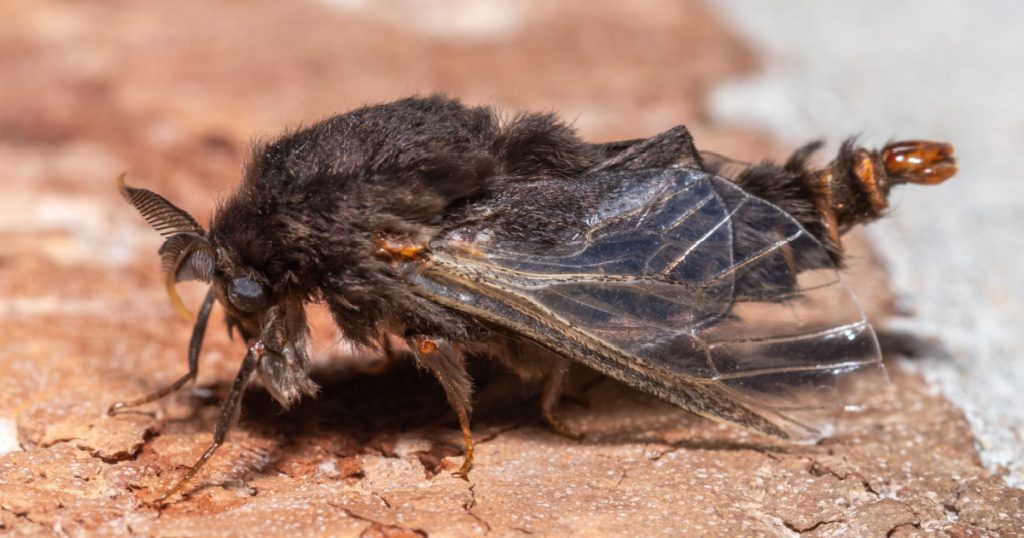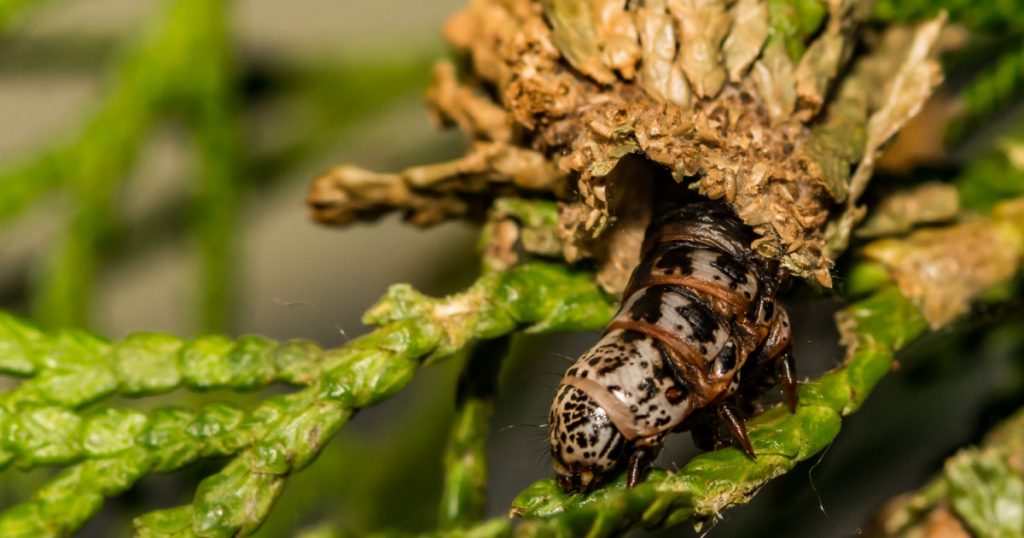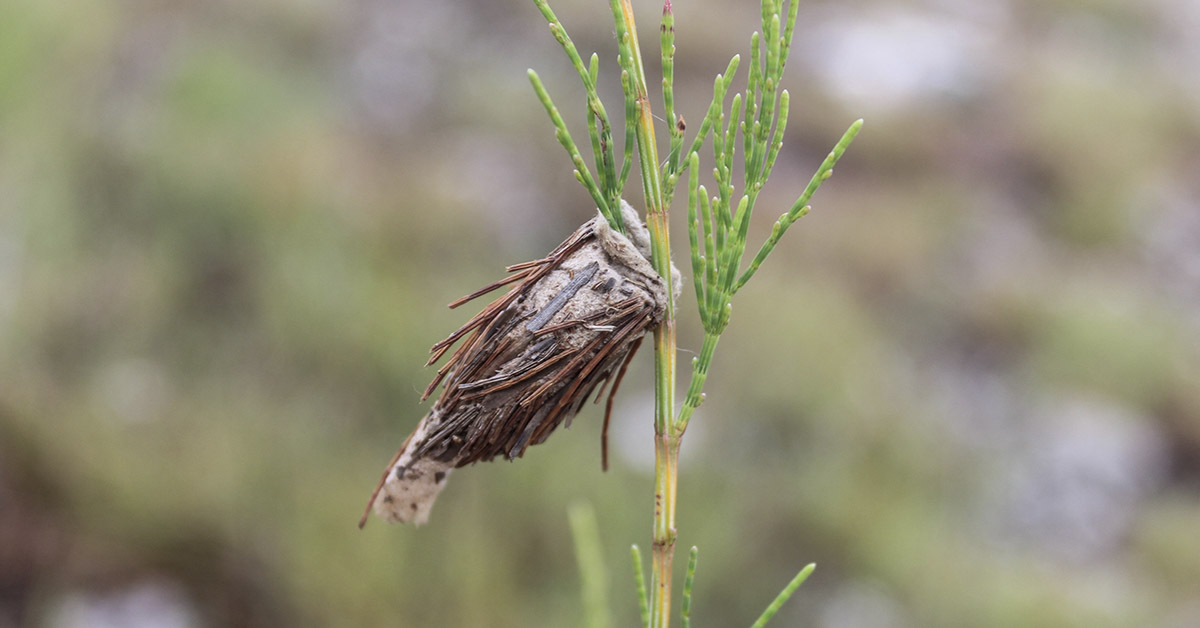Anyone who’s ever had an issue with an Evergreen Bagworm infestation knows the devastation they bring to trees. The poor trees become increasingly sparse in their pine needle distribution until they eventually lose them all and die. This is a sad end to the beautiful evergreen trees we all love. Thankfully, there are ways to save your trees if you know what to do.
The Evergreen Bagworm: The Silent Killer of Trees
In the world of pests that threaten the health and beauty of trees, few are as notorious as the Evergreen Bagworm. Despite its name, the Evergreen Bagworm is not a worm but a moth in its larval stage. These deceptive creatures can wreak havoc on various evergreen and deciduous trees, causing significant damage and even death if left unchecked. (1)
Understanding the Evergreen Bagworm

The Evergreen Bagworm, scientifically known as Thyridopteryx ephemeraeformis, is a species of moth that belongs to the family Psychidae. These small, inconspicuous creatures owe their name to the distinctive protective casing they construct around themselves, known as a bag or case. Bagworm larvae attach bits of plant debris, such as leaves, twigs, and bark, to their bodies using a silk-like thread they produce. Over time, this structure grows and becomes their portable shelter and means of camouflage, making them appear as small bags hanging from tree branches.
Life Cycle of the Evergreen Bagworm
Understanding the life cycle of the Evergreen Bagworm is crucial for effective management. The reproductive cycle of these moths begins when the female adult lays her eggs within her own bag. Afterward, she dies, and the bag is left hanging on the tree. These eggs remain dormant throughout the winter and hatch in late spring or early summer, giving rise to tiny larvae.
Once hatched, the larvae emerge from the bag and disperse for a suitable host tree. When they find a suitable location, they begin constructing their bags using silk produced by special glands in their bodies. At first, the bags are small and inconspicuous, but as the larvae grow, they periodically emerge to add more plant debris to their casing. Over time, these cases become larger and more noticeable.

As the larvae grow, they molt several times, shedding their skin to accommodate their increasing size. Each growth stage, or instar, involves the construction of a new bag. The bagworm larvae typically reach their final instar in late summer or early fall. At this stage, which spans approximately six weeks, the larvae are fully developed and ready to pupate.
The transition from the larval stage to the adult moth stage takes place within the protective case. The pupae develop inside the bagworm cases, hidden away from sight. After around two weeks, the adult moths emerge by cutting a circular opening in the case. The male moths, which are dark, small, and possess clear wings, fly off in search of females, while the female moths, which are larger, wingless, and resemble maggots, stay close to the original tree. (2)
Read: 7 Easy Ways To Keep Snakes Away From Your Yard
The Destructive Nature of the Evergreen Bagworm
Although they may appear harmless at first glance, Evergreen Bagworms can cause severe damage to trees if left unmanaged. These pests are voracious eaters, feeding on the foliage of various tree species. Their bags provide them with protection and camouflage, allowing them to remain unnoticed until the infestation becomes severe.
The continuous feeding of bagworm larvae leads to defoliation, hindering the tree’s ability to photosynthesize and produce the necessary nutrients for growth and survival. In addition, the feeding activity weakens the tree, making it vulnerable to other diseases, pests, and environmental stressors. If left untreated, the presence of Evergreen Bagworms can result in tree decline and, in some cases, tree death.
Managing Evergreen Bagworm Infestations
Prompt and effective management is crucial to minimize the damage caused by Evergreen Bagworm infestations and protect the health of affected trees. Here are several strategies and techniques to consider (3):
- Manual Removal: For small infestations, manually removing the bagworms by hand can be an effective solution. Carefully inspect the tree branches and identify the bags, which are often mistaken for small cones. Gently remove the bags, making sure not to drop them on the ground to prevent potential reinfestation.
- Pruning and Destruction: If an infestation is more widespread, pruning the affected branches and properly destroying them is recommended. Bagworms may also construct bags on structures near the tree, such as fences, which should be inspected and removed if necessary.
- Biological Control: Certain natural predators, such as birds and parasitic wasps, feed on bagworms and can significantly reduce their population. Encouraging biodiversity in your garden can help establish a healthy ecosystem that supports these natural predators.
- Chemical Control: In cases of severe infestation or when other methods prove ineffective, chemical control may be necessary. Insecticides specifically formulated for bagworm control can be applied to the foliage of affected trees following the manufacturer’s instructions. It is important to note that chemical control should be approached with caution and only used as a last resort, considering the potential environmental impact.’
Read: Have silverfish in your home? You could have an expensive problem on your hands.
Maintaining Healthy Trees
Prevention is always better than cure when it comes to Evergreen Bagworms. By implementing certain practices, you can reduce the risk of infestation and promote the overall health of your trees:
- Regular Inspection: Regularly inspect your trees, especially during spring and early summer, to detect any signs of bagworm infestation. Early detection can make management much easier and prevent widespread damage.
- Good Tree Maintenance: Properly maintain your trees by pruning dead or damaged branches and keeping them well-watered and fertilized. Healthy trees are more resistant to infestations and can recover more effectively.
- Remove Bagworm Bags: If you come across any bagworm bags during your inspections, promptly remove and destroy them. This proactive measure can prevent the spread of these pests to other trees.
- Avoid Overcrowding: Maintain proper spacing between trees and avoid overcrowding to enhance air circulation and reduce the risk of infestation.
- Monitoring Surrounding Vegetation: Keep an eye on neighboring trees and plants, as bagworms can migrate from one host to another. Take necessary precautions if you notice signs of infestation nearby.
The Bottom Line
The Evergreen Bagworm may be small and inconspicuous, but its potential to silently destroy trees should not be underestimated. By understanding their life cycle and destructive nature and implementing effective management practices, you can protect your trees from these hidden invaders. Regular inspections, proactive measures, and maintaining healthy trees will go a long way in preventing infestations and preserving the beauty and vitality of your landscape.
Keep Reading: Spider Expert Explains What You Should Do When You See A Daddy Long Legs
Sources
- “Dealing with Bagworms on Landscape Plants.” Entomology
- “Evergreen Bagworm Moth.” MDC
- “How to Get Rid of Bagworms.” The Spruce. Marie Iannotti. November 18, 2021.

